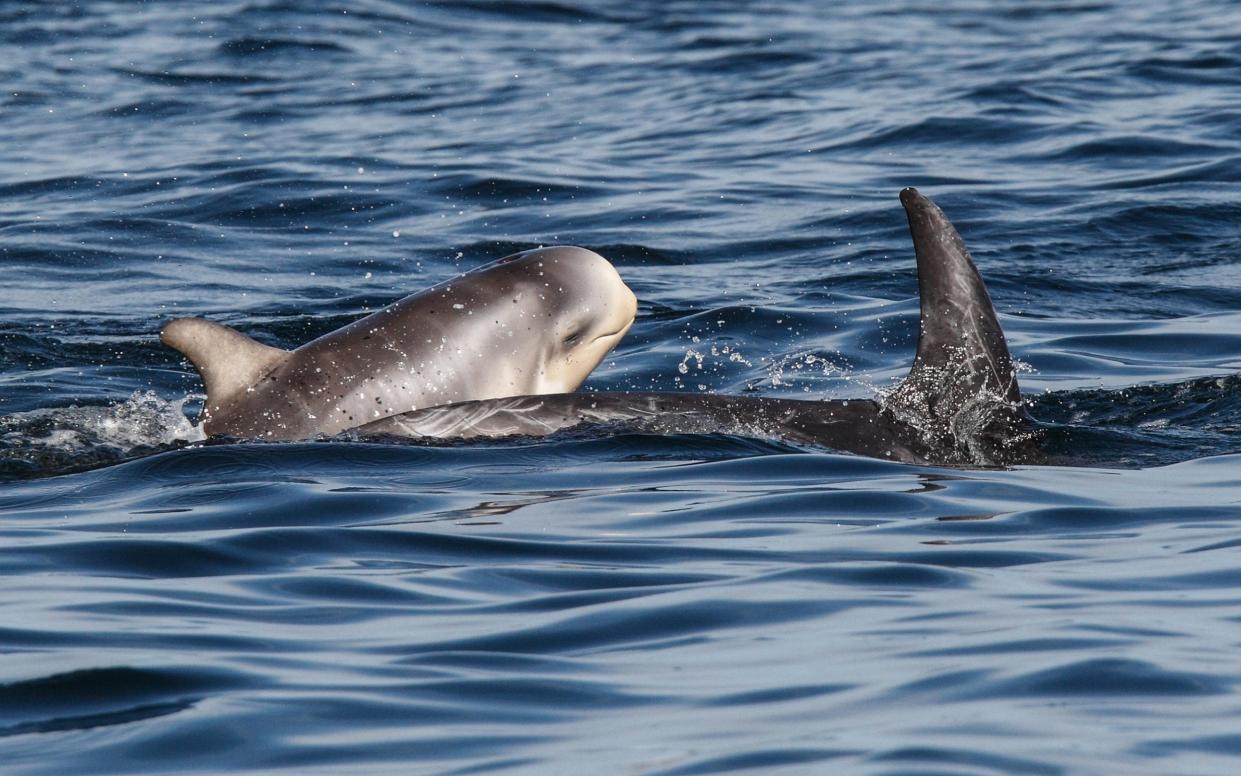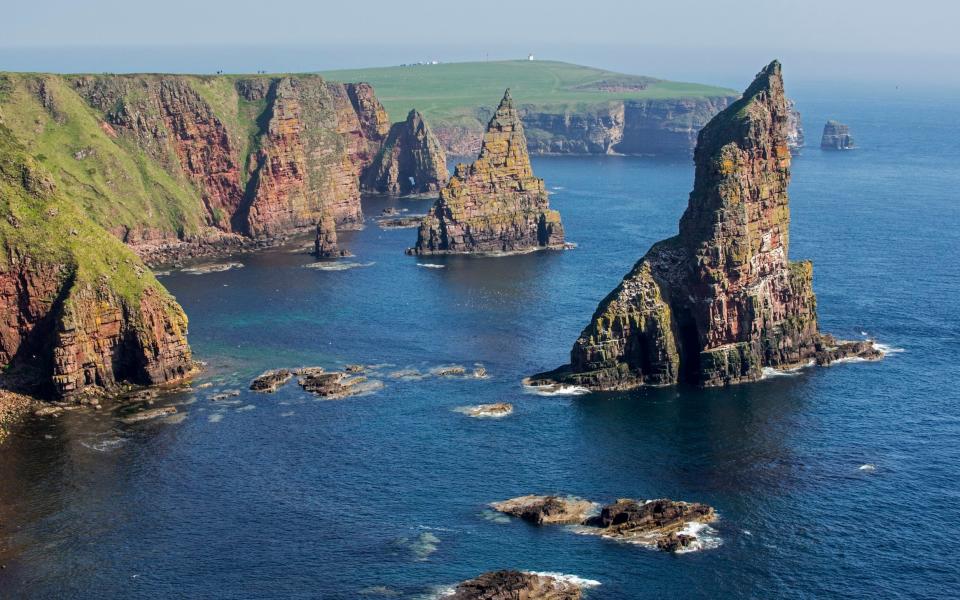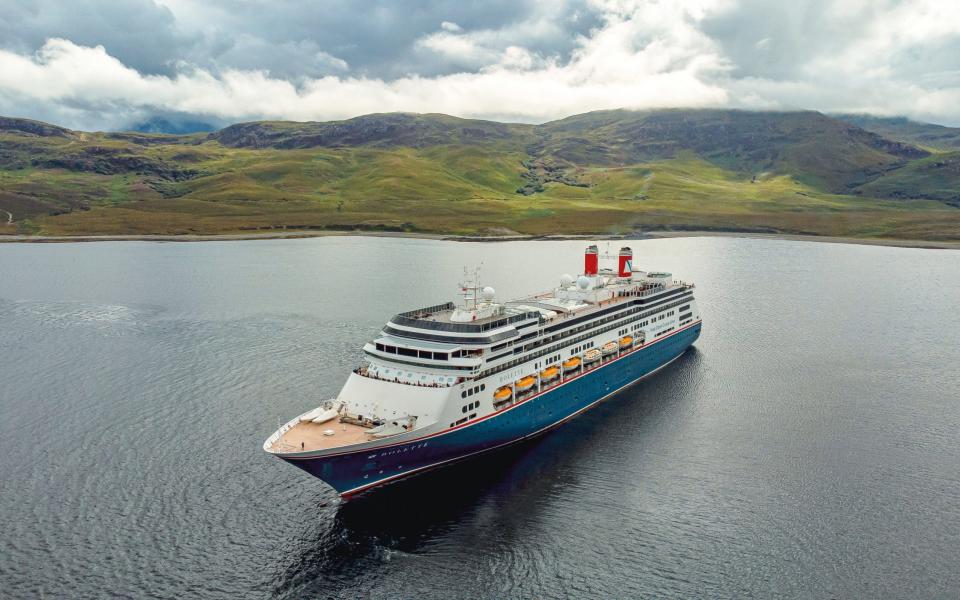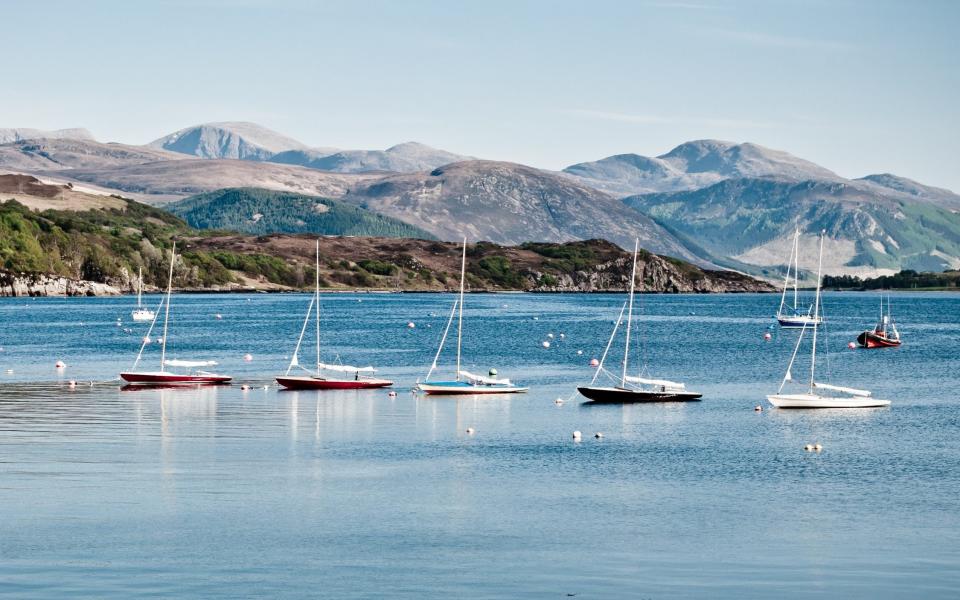Age is no barrier to a big wildlife adventure

“There she blows!” That was the cry of the old-time whale hunters perched in the crow’s nest. Today the whales can breathe more easily since the business of harpooning these gentle giants for their blubber has been overshadowed by a whale-watching industry worth more than $2 million (£1.44 million) worldwide every year.
In Britain it began off the Isle of Mull in 1989, and last summer, Scotland – in particular Orkney, Shetland, and the Pentland Firth – was the destination of choice for Fred Olsen’s first ever scenic British Isles and summer wildlife cruise on board Bolette, its new 62,000-ton flagship.
Age shouldn’t be a barrier to anyone in search of an epic wildlife holiday. So if, like me, you have had a lifelong passion for the wonders of the natural world but are getting a little grey in years, there is nothing like this soft adventure to get your fix. The cruise aspect makes everything so convenient – boarding and disembarking in England means you don’t have to navigate an airport (or any tricky Covid restrictions at all) and you just unpack the once. It’s an easy way of enjoying wildlife without having to travel halfway around the world.
Named after Fred Olsen Jr’s great-great-grandmother, Bolette has room for 1,338 guests in her 690 cabins, but is still smaller than most other cruise ships, allowing her to reach destinations inaccessible to large vessels.
When I joined her in Dover, she had just completed her maiden voyage after an extensive makeover in Rosyth, and her royal blue hull and sleek white superstructure were sparkling in the August sunshine. Accompanying us on this special cruise were Andrew Crowder and Tony Chenery, two hawk-eyed experts from Orca, the UK-based marine wildlife charity dedicated to studying and protecting the whales, dolphins and porpoises found in the seas around Britain and Europe.
In British waters alone, no fewer than 28 cetacean species have been observed. They include such giants as humpbacks and fin whales, and at least seven species are spotted regularly throughout the year.
Binoculars forever at the ready, Crowder and Chenery scanned the seas for signs of life from the open deck below the bridge. Even before we had left the English Channel behind, they had spotted our first marine mammals of the voyage – a gathering of harbour seals hauled out on the Goodwin Sands.

Our first taste of Scotland’s stunning coastline came early next morning as we cruised past Duncansby Head, the most north-easterly point on mainland Britain. Its shark-fin pinnacles mark the gateway to the Pentland Firth, the turbulent strait between Caithness and Orkney whose treacherous waters we now entered. Bearing sinister names such as the Swilkie, the Boars of Duncansby and the Merry Men of Mey, its notorious currents swirled past beneath our bows at speeds of up to 16 knots (18mph) but Bolette simply took them in her stride.
As I gazed over those churning tide-ways, the years fell away and I was an able seaman again, seeing out my national service in the Royal Navy. For me this was a trip down memory lane, revisiting the waters I had last seen from the deck of HMS Welcome, an Algerine class minesweeper based at Invergordon in the Cromarty Firth. From there, as part of the Navy’s Fishery Protection Squadron, we put to sea to patrol the fishing grounds between Shetland and the Outer Hebrides.
In summer, keeping watch from the bridge as we cruised through the Minch, there was no lovelier place to be when the sun beat a silver path through the islands and the blue sugarloaf mountains of Assynt – Canisp, Suilven and the rest – loomed on the eastern skyline. But how different it was in a howling gale, when the ship rolled so violently that I was once flung from my hammock. At that time submariners were paid an extra shilling a day to compensate for the hardship of living beneath the sea. We used to say we deserved at least sixpence a day for being submerged by every other wave we encountered whenever the going was rough.
I can say without hesitation that life on board Bolette was a billion times more comfortable than Welcome’s spartan messdeck. The overall impression was of watching Europe’s wildest coast unspooling from the five-star comfort of a floating hotel.
For a start, my cabin had its own private balcony and a bath with a jacuzzi. Nor was there the remotest chance of anyone going hungry. With at least half a dozen restaurants on board, dining options ranged from five-course à la carte dinners in the Terrace to modern Asian fusion dishes at Colours and Tastes, or the spicy flavours of Goanese-inspired cuisine at the Vasco. As for the 615-strong ship’s company, one would be hard pressed to find a more cheerful or welcoming crew.

Even without the chance to spot wildlife there was always something to do on the ship. One morning I listened to a lecture about the Vikings in the ship’s cosy two-tiered theatre, and most days, after hours on deck in search of cetaceans, I swam in the heated pool on Bolette’s lido deck with its retractable roof and life-size bronze statue of a grizzly bear and her cub.
Back on watch again after lunch, somewhere between Thurso and the Kyle of Tongue, we spotted a pod of bottlenose dolphins barrelling along in a welter of spray. They were our first cetaceans but not the last, and by the time we reached Loch Eriboll we had added Risso’s dolphins and white-beaked dolphins to the list.
Running deep into Sutherland towards the gaunt summit of Foinaven, this lonely sea loch has long been a favourite deep-water refuge for vessels seeking shelter from Pentland’s rip-roaring winter storms. To the Royal Navy matelots who anchored here in wartime it was known as “Loch ’Orrible” – and those crewmen included the brave souls who lost their lives in 1941 when the battlecruiser HMS Hood was sunk by the Bismarck, a disaster remembered by the ship’s name picked out in white stones on the open hillsides surrounding it.
Otters are seen regularly in the loch’s still waters, and I scoured the shallows with my binoculars, hoping in vain for a glimpse of a fierce whiskered head. I was rewarded instead by the sudden appearance of two white-tailed eagles. These magnificent raptors with their eight-foot wingspan are Britain’s biggest birds of prey. Known also as sea eagles, they were driven to extinction in 1916 but reintroduced to the Hebrides in 1975 and Wester Ross in the 1990s, since when their numbers have risen to around 150 breeding pairs.
After leaving Loch Eriboll we continued our journey around Cape Wrath, the furthest north-west corner of mainland Britain (so-called on account of its Gaelic name, meaning the turning point) before heading south past the Summer Isles to steal into the four-mile-wide mouth of Loch Broom.
Around us lay Britain’s Empty Quarter – a loneliness of haunted hills with their heads in the clouds, and the anvil ridge of An Teallach on the south-western horizon. By now the wind had died and the loch was a mirror, reflecting the white houses of Ullapool and the Caledonian MacBrayne ferry from Stornoway at rest by the quayside.

At Ullapool we retraced our steps past Cape Wrath and then bore away to Orkney, arriving early next morning in time to marvel at the Old Man of Hoy. Separated from the rest of the island by a 200ft chasm, this slender chimney of old red sandstone is the UK’s tallest sea stack, soaring 450ft above the waves. On we cruised towards Marwick Head, marvelling at the miles of guano-spattered cliffs – the high-rise tenements of kittiwakes and guillemots that breed each year in their tens of thousands.
Nobody comes here for a suntan, but in this time of global warming when half the hills of Greece were ablaze, it was a joy to spend time under Orkney’s cloudy skies, drifting through ghostly fog banks and whirling snowstorms of feeding gannets, past islands and seascapes painted in a hundred shades of grey. And it was here, midway between Hoy and the Orcadian mainland that we spotted two minke whales.
Inevitably it was our Orca spotters who saw them first, 10-tonne monsters moving through the water like miniature submarines on patrol. Their polished obsidian backs were plain to see, as were their sickle-shaped dorsal fins when they dived.
Further sightings of dolphins followed, and even without any cetaceans in view there were always the seabirds. Sooty shearwaters zoomed past on switchblade wings, and piratical bonxies hung on the wind, waiting to bushwhack gannets and rob them of their catch.
The only disappointment came later. We were bound for Sumburgh Head at the southernmost tip of the Shetland mainland with a strong possibility of encountering the pods of orcas that have taken up residence in these waters. But alas, the islands were wrapped in a dense sea fret. No chance of spotting Shetland’s killer whales, still less the Viking isles themselves, reawakening distant memories of ceilidhs in Lerwick, dancing the last waltz among thigh-booted fishermen as the band played The Mist Covered Mountains. One day, I must go back.
How to do it
Brian Jackman’s five-night cruise was arranged by Fred Olsen Cruise Lines (0800 035 5027; fredolsencruises.com). Its worldwide cruise holiday programme for 2022-24 offers a choice of destinations on board Bolette and her sister ships Borealis, Braemar and Balmoral. An eight-night Scenic Isles & Lochs of Scotland cruise with Orca on board departs Liverpool on June 9; from £1,299pp


